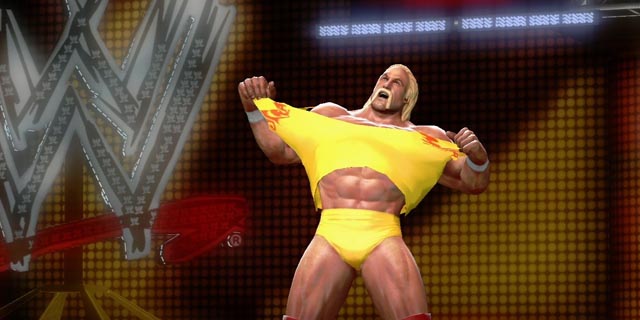
Professional wrestling and video games have a lot in common. Both tend to depict impossibly-strong men and impossibly-endowed women fighting each other for glory and riches. Both have rabid fanbases that will explain, in great detail, why the current product is terrible, how it used to be better, and how they (specifically they; lucky you – the listener!) know exactly how to fix the product. They also tend not to discuss why they are fans in the first place. It’s not because they’re pessimistic by nature, it would just be stating the obvious; both offer incredible entertainment experiences unlike any other. At their highest quality, fans will tell you nothing else comes close. The highlights offer memories that last, instead of occurrences that disappoint.
I’m talking about feuds, something that is at the core of wrestling storytelling. The fundamentals of a wrestling feud are simple. (Or rather, they should be simple.) Good guy (a.k.a. the “face,” somebody the crowd cheers for) goes against bad guy (the “heel”). Maybe the bad guy steals the good guy’s girlfriend. Maybe he insults his mother’s honor, spills coffee on him (seriously) or just generally hates them for no sensible reason. Despite the simple premise, the complexities of a good-versus-evil feud can exist in pro wrestling as they do in other media.
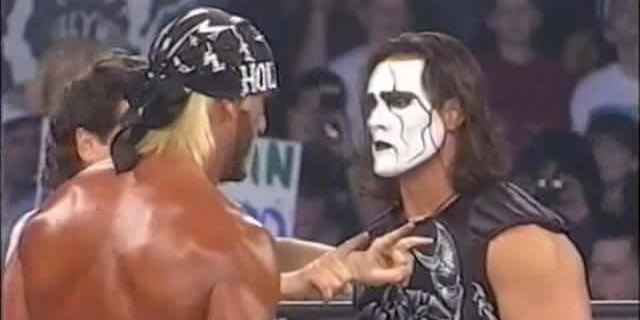
Sometimes the good guy and bad guy will switch roles halfway through the story. Sometimes their personalities and abilities don’t make for a compelling feud, so it fizzles out. You’ll often find fans who cheer for the bad guy instead of the good guy. Some feuds are absolutely timeless; the people in charge will find two groups that just match so well together that they’ll swear that they just got lucky. And oftentimes they do. A fantastic feud will usually have extraneous circumstances that help make it more than just a one-on-one fight; perhaps political unrest in a certain country adds fuel to an already-blazing fire. Maybe the timing is just right; the WWE Attitude era, their most profitable ever, simply could not have happened in the ’80s or early ’90s.
The spark of the feud can be just as important as the buildup, and that is where games and wrestling cross paths and share storytelling greatness. Wrestling’s greatest feuds all share an effective buildup. It’s psychological. It teases. It simmers. It pits not just good versus evil, but builds deep and strategic differences between the combatants. It delves into each warrior’s history. It forces the watcher to analyze the opponent’s perceived strengths and weaknesses. It builds a belief that either side could win. But, most of all, it makes the audience want to see the bad guy get their comeuppance. It creates a sense of anticipation that sets crowds into frenzies. It makes you want to watch. It makes you want to play. You can’t miss it.
WCW did this extremely well when they pitted their star face at the time, Sting, against Hulk Hogan, their top heel and member of the infamous nWo. WCW was patient, however. They didn’t want to rush a matchup that would certainly mean huge money in terms of pay-per-view buys. So they teased. They showed Sting high above the rafters, surveying the ring. Every time Hogan would squash an opponent, they would lead the fans to the belief that Sting would show up and pummel Hogan. Over, and over. Finally, after almost a year of buildup, the match happened during their Super Bowl of pay-per-view, Starrcade. It was huge success on all accounts. WCW did it right.
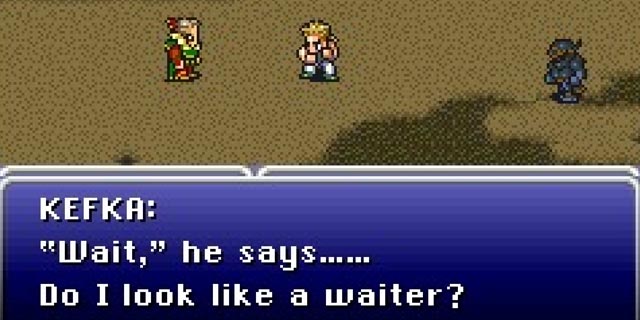
Final Fantasy VI did it right, too. Boy, did it ever do it right. You want to talk about buildup? Kefka is one of the best villains in game history, and the buildup to the final battle against him starts very early and continues throughout the game. Gruesome twists, false victories and absolutely jaw-dropping, shocking revelations are all meticulously built into the storyline around Kefka. You see him as a relatively comedic, goofy villain who takes orders he doesn’t want, carries them out and is constantly complaining about everything, from his superior’s motives to sand in his shoe. As the story goes on, through multiple scenes, you start getting the notion that he’s less of a Sideshow Bob and more of a Joker. Not the kind who tells jokes, more of the Batman variety who takes pure joy in killing and has an insane notion of what the world should be.
If FF6 was like most other games, you’d end up defeating him midway through the game only to realize there’s a “higher power” who was controlling him; your new target. But no. Square let the feud simmer. They made you hate Kefka more, as if that was possible. Expanding on the notion of growing power, Square took a running leap over the bar and made Kefka not only poisonously awful, but arguably the most successful villain in the history of the medium. They did it through his speech, which became more and more rambling about death and gods and magic. And they did it through his actions; on that day, the world was changed forever. If you haven’t played FF6, do so. I won’t spoil anything more, but I guarantee the final battle in the game is the best, and has an excellent payoff. A great feud. Bravo, Square.
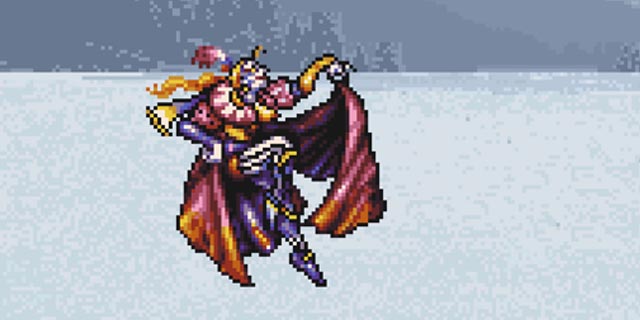
Fans want a solid buildup and payoff. They don’t want a cheap, rushed plotline and then have the rug swept out from under them (in a bad way). Imagine if Hogan had said to Sting, on the night they were finally set to wrestle at Starrcade, that Sting would be facing… Hogan’s father! Hogan’s father then comes out and says that Sting won’t be facing him after all…but somebody else! Nobody’s heard of them! Fans would have gone ballistic. There would have been riots.
Yet games do this all the time. How many times have you played a game with a storyline? With actual characters, good, bad and inbetween? Chances are, all of you have. Which means that many of you have played a game where this happens.
Villain A is established. He’s cool. He does bad things: insults your party, destroys a town and kills a beloved party member. You don’t like him. You want to beat the living crap out of him during every cut scene. You want to blast him with all your accumulated powers all at once. Then, you want to revive him, and do it over and over again. Stab him in the face, Wind Waker-style. Bury him alive. Perfect. Except halfway through the game, you defeat him. Game over? Nope, Villain B enters. She’s a witch. She was controlling Villain A the whole time. Now you… okay, now you have another villain who you just met. Now she’s the main target. Except five hours later, it’s Villain C. Villain C, trust me this time, was the real force behind it all. Or was she? Enter Villain D, who is a robot spirit or something and wants to kill everything because it’s evil. (This is one of the lamest motivations for villains in games, and it happens all the time.)
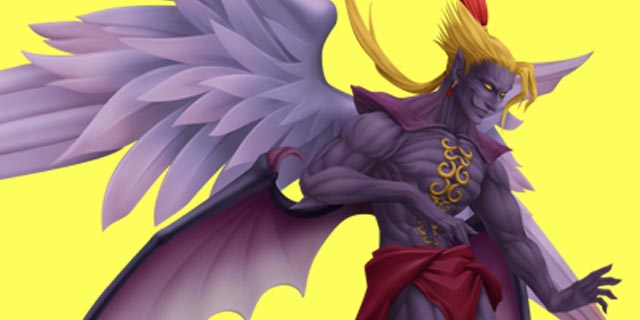
I hate when games do this. Hate it, hate it, hate it, hate it. Why are you introducing somebody who I don’t care about as the main villain? Why are you downplaying Villain A’s role and impact? It’s lazy. It’s bad game design. It’s very, very common. I’m not saying that you can’t have multiple villains, or do any switches at all. The point is that you have to make each villain’s case through their actions in order for the player to feel empowered when they finally beat them. Don’t rush it. Don’t make them weak. Show us their motivations. Give them some back story. Okay, so you’re going the tried-tested-and true method of making them “evil.” Why are they evil? Show us, don’t tell us. Some games might as well have nametags on some characters. “Hi, I’m Generic Bad Guy, please hate me.” Lame.
Ric Flair, one of the greatest pro wrestlers ever, was asked once why he always made the other guy look good. He responded with “because if you make a guy look like a piece of sh*t, all you’ve beaten is a piece of sh*t.” I don’t want that in a video game. I want to beat the mastermind behind it all. I want to beat the impossible odds and defeat him in an epic battle I’ll remember for all my life. I want to avenge my lost bretheren. I want to look back, as the end credits roll, and relish the fact that I, the gamer, had finally taken somebody down. I’d seen the ref fall to the mat and counted 1-2-3 and on 3… I was on my feet, cheering. And I don’t want to do that against somebody I met two minutes ago.



















